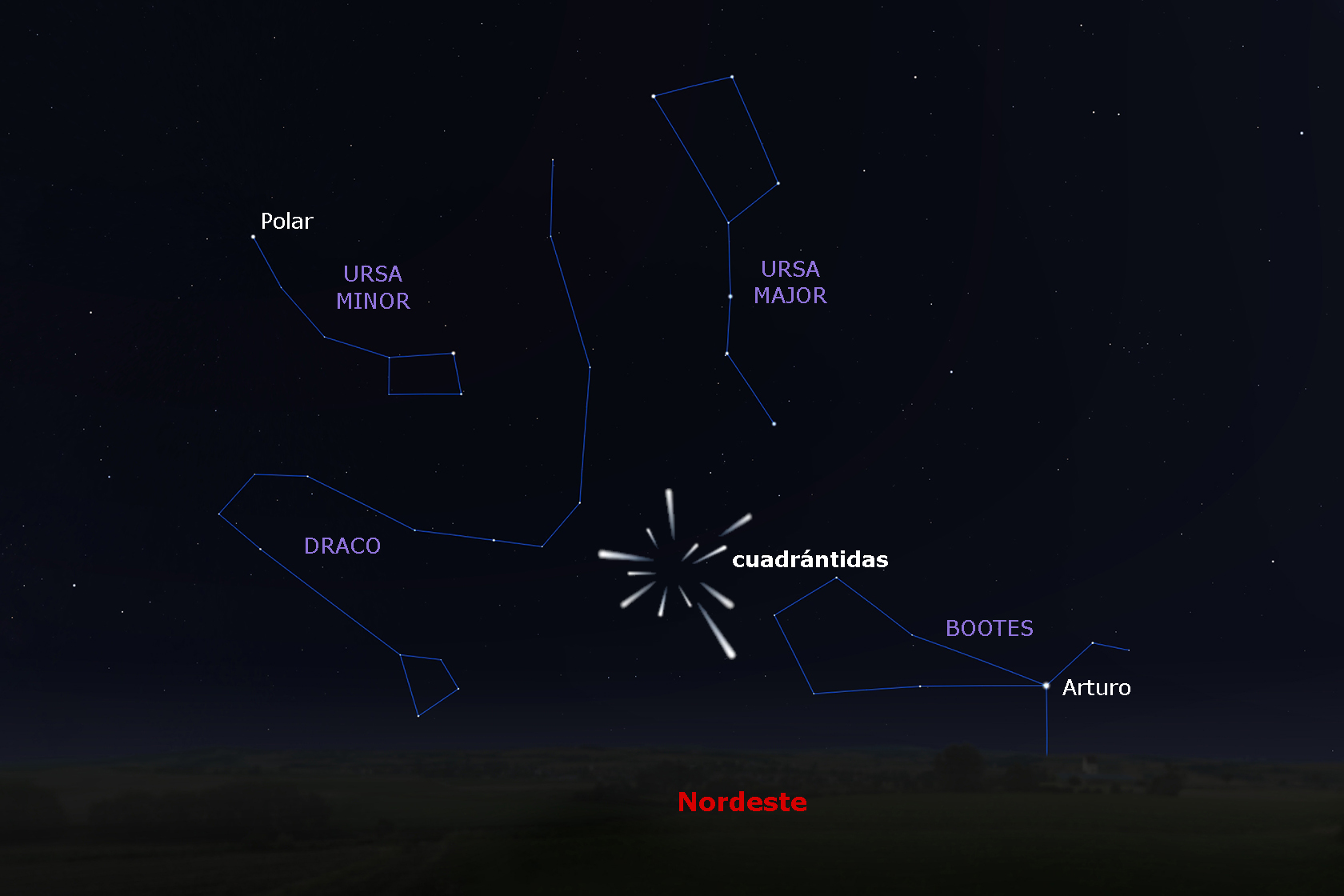Quadrantid
The Quadrantid is the first meteor shower of the year in the northern hemisphere. It is visible between December 28 and January 12, and its peak time is around January 3.
The maximum activity of the quadrantid shower is expected during the early hours of January 4. The crescent Moon, three days before the full Moon, will illuminate the sky for most of the night, so visibility conditions will be poor. The best time for observation will be near dawn, because the radiant will be higher in the sky and the Moon will disappear over the horizon.
What to expect in 2025?
This is one of the strongest showers of the year, but its observation in 2025 will be hampered by the moment of the maximum, which will take place at 3 p.m. universal time, January 3. Due to the date, the meteorological conditions might be bad.
During the previous and the posterior night the illumination of the Moon will be around 10%, and it will not affect the visibility.
Why do they happen?
The origin of the Quadrantids remains uncertain. Some astronomers speculate that asteroid 2003 EH1 may be the one causing this shower. This asteroid was discovered in 2003, and is believed to be related to the extinct comet C/1490 Y1 observed by Chinese, Japanese, and Korean astronomers about 500 years ago.
As every year at this time, the Earth crosses a ring populated with the fragments supposedly released from asteroid 2003 EH1. When one of these fragments (or meteoroids) comes into contact with the Earth's atmosphere, it is burnt by friction with the air, creating the luminous glow that we know as a meteor or shooting star. Typically, the most common meteors that we observe with the naked eye are produced by particles a few millimeters to a few centimeters in size that burn up at about 100 kilometers in height.
The corresponding meteor shower seems to have a single center of origin, a point from which all shooting stars seem to emerge. This point is called "radiant" and its location is often used to name the meteor shower. The location where the Quadrantids seem to come from is north of the constellation of Bootes, near the tail of the Big Dipper. The name of the Quadrantids comes from the constellation Quadrans Muralis, named by the French astronomer Jerome Lalande in 1795, but currently not recognized by the International Astronomical Union (IAU).

The 'radiant' of the Quadrantids.
How to see the Quadrantids?
They can be observed from any location as long as it provides a dark sky. It is preferable to observe from a place that has few obstacles that limit our sight (such as buildings, trees or mountains), and not to use optical instruments that reduce our field of vision. Even though the Quadrantids seem to come from the constellation Bootes, they can be seen anywhere in the sky. It is recommendable to look towards the darkest areas, in the opposite direction to the position of the Moon if the observation is made before it sets. The most comfortable strategy is to lie down and wait for your eyes to get used to the darkness. Given the time of year, it is essential to wear warm clothes.
